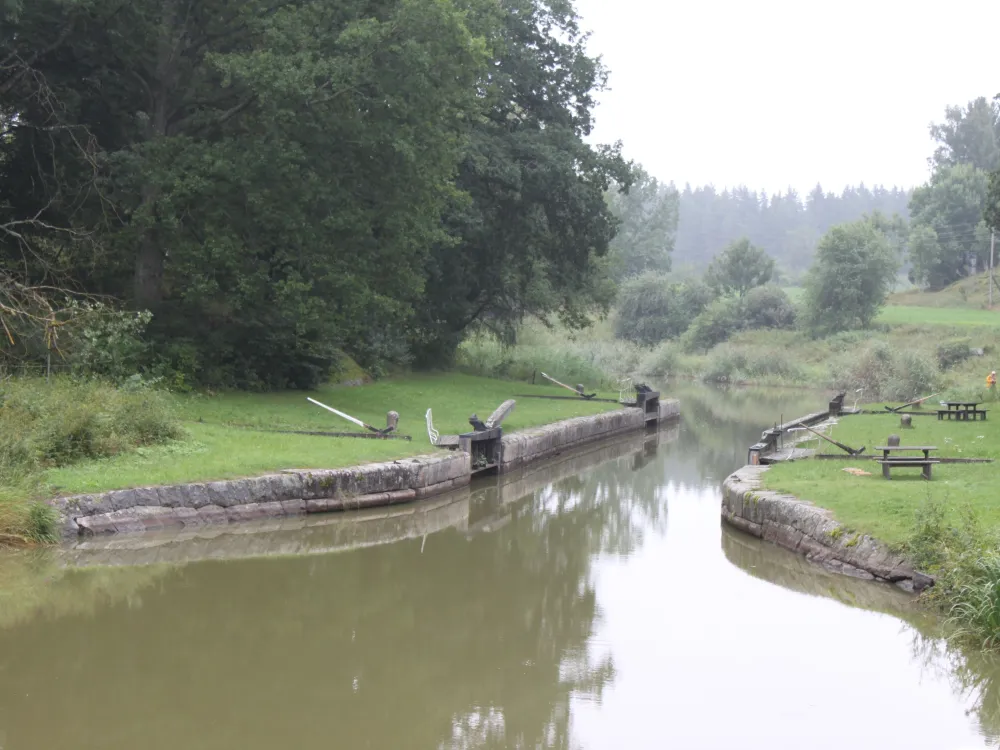The Klämman Lock
Read about the Klämman Lock 's formal name, year of construction and technical facts. Learn the history!
Product description
Formal name: Linköping
Year of construction: 1826
Technical facts:In the past, the lock at Klämman used to remain open at all times, as Lake Asplången had been lowered to the same level as the canal in 1958. For this reason, there was no lock keeper here either, since boats could just sail right through. However, in 2017 it was decided that as a consequence of new dam safety regulations introduced in 2014 the lock could no longer be left open. The water level of Lake Asplången rises rapidly when there is a considerable precipitation and this has caused water to flood the lock quay. Because of this, there is now always a lock keeper at Klämman, guiding boats through the lock.
The upper pair of lock gates retain their original cast iron frame and are covered in wooden boarding. All locks on the Göta Canal can be crossed by pedestrians, who can simply walk on top of the gates. The upper lock at Klämman, however, has a reinforced, extra wide path atop the lock. This is due to the fact that the towpath from Mem to Klämman ran along the south side of the canal whilst the one from Klämman to Snövelstorp ran along the north side. This meant that the horses and oxen towing the boats had to cross the lock here at Klämman.
Above the upper lock gate at Klämman, there is also a placement slot in the wall, visible as a groove cut into the rock. Temporary, removable gates were inserted here when the ordinary, permanent ones required repair. Placement slots were found at those locks that could not be otherwise drained. Lake locks and long sections without locks are typical examples of places where these slots can be found.
